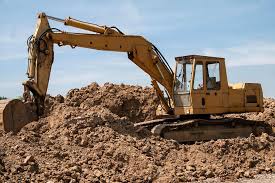When it comes to installing or maintaining a well, trenching contractors play a crucial role. Trenching involves digging narrow, deep trenches to facilitate the installation of utilities, including water pipes and electrical conduits necessary for a well to function efficiently. For anyone looking to undertake such projects, experienced trenching contractors provide invaluable expertise and ensure the job is done right. They handle everything from digging to managing the complexities of laying pipes and conduits.
Using appropriate trenching techniques and tools is vital for ensuring the longevity and efficiency of your well. Also, proper planning and safety measures are essential to execute trenching projects successfully. Whether considering a new well installation or maintaining an existing one, understanding the role of trenching contractors can help guide your project to completion without hitches. Let’s explore what these experts do in well-related trenching projects.
Key Takeaways:
- Trenching contractors are vital for installing and maintaining wells, ensuring proper utility installations and drainage solutions.
- Professional trenching ensures long-term benefits and reduces risks like soil erosion and water damage.
- Advanced tools and techniques enhance the efficiency and safety of trenching projects.
Role of Trenching Contractors in Well Projects
Trenching contractors handle various tasks related to well projects. From the initial site assessment to the completion of utility installations, their expertise ensures the project’s success. They dig trenches to lay pipes and electrical conduits required for the well’s operation. This process involves precise calculations to ensure the trench’s depth and width are appropriate for housing the utilities without compromising safety or functionality.
These contractors also address potential environmental impacts by implementing erosion control measures and ensuring proper drainage. Properly executed trenching work facilitates efficient well pipe installation services, making the well reliable and long-lasting. They also manage the backfilling process, maintaining the trench’s integrity over time.
Planning and Assessing the Site
The success of any trenching project, especially for wells, starts with thorough planning and site assessment. Trenching contractors evaluate soil conditions, topography, and existing underground utilities. This initial assessment is critical for determining the most suitable trenching technique and tools. They also secure necessary permits and consult with local utility companies to avoid legal issues and ensure safety during excavation.
Professional input from trenching contractors helps identify potential challenges early, allowing for a strategic approach to the project. Effective planning minimizes risks, saves time, and ensures a smooth execution from start to finish.
Essential Tools and Equipment
Basic Tools and Machinery
Hand tools such as shovels and spades are essential for small-scale trenching projects, particularly where precision is required. Advanced machinery like trenchers, mini-excavators, and backhoes play a crucial role for larger projects. These machines expedite trenching, ensure consistent trench dimensions, and significantly reduce manual labor.
Safety Gear
Safety is paramount in trenching projects. Contractors use protective gear, including helmets, gloves, and sturdy footwear, to safeguard against potential hazards on the site. Clear communication and adherence to safety protocols are crucial for preventing accidents and ensuring a safe working environment.
Step-by-Step Guide to Trenching for Wells
Step 1: Site Assessment
The first step involves a comprehensive site assessment. Contractors evaluate the soil type, existing utilities, and environmental conditions to determine the best trenching approach.
Step 2: Marking and Excavation
Contractors mark the trench layout using paint or flags to outline the path. Detailed marking helps avoid existing utilities and guides the excavation process. They then commence digging, adhering to the predetermined depth and width specifications.
Step 3: Installing Utilities
Once the trench is dug, the next step is to lay the pipes and electrical conduits needed for the well. Contractors ensure these utilities are placed correctly and securely within the trench.
Step 4: Backfilling and Compaction
After installation, the trench is backfilled with the excavated soil. Contractors compact the soil in layers to maintain stability and prevent future settling. This process ensures the longevity and integrity of the trench and the installed utilities.
Maintenance Post-Trenching
Regular maintenance is crucial for ensuring the long-term functionality of the installed well utilities. Contractors conduct periodic inspections to identify and address issues like erosion, settling, or damage to the utilities. Timely maintenance helps prevent significant structural problems and ensures the well continues to operate efficiently.
Frequently Asked Questions
Why is professional trenching important for well projects?
Professional trenching ensures the trench is dug accurately and safely, preventing issues like utility damage and soil erosion. Contractors bring expertise and tools that enhance the project’s efficiency and safety.
What tools are commonly used in trenching projects?
Common tools include hand tools like shovels for precision work and machinery like trenchers and mini-excavators for larger projects. Safety gear is also essential to protect workers from potential hazards.
How often should trench maintenance be conducted?
Regular inspections should be conducted at least annually to ensure the trench’s integrity and the utilities’ functionality. If any issues like erosion or settling are detected, immediate maintenance is crucial.
Conclusion
Trenching contractors are essential in well-related projects, from site assessment to utility installation and maintenance. Their expertise ensures that trenching projects are executed safely and efficiently, providing long-term benefits and reducing risks like soil erosion and water damage. By following best practices and employing the right tools and techniques, these professionals help ensure the successful completion of well trenching projects, contributing to the overall durability and reliability of the well.

